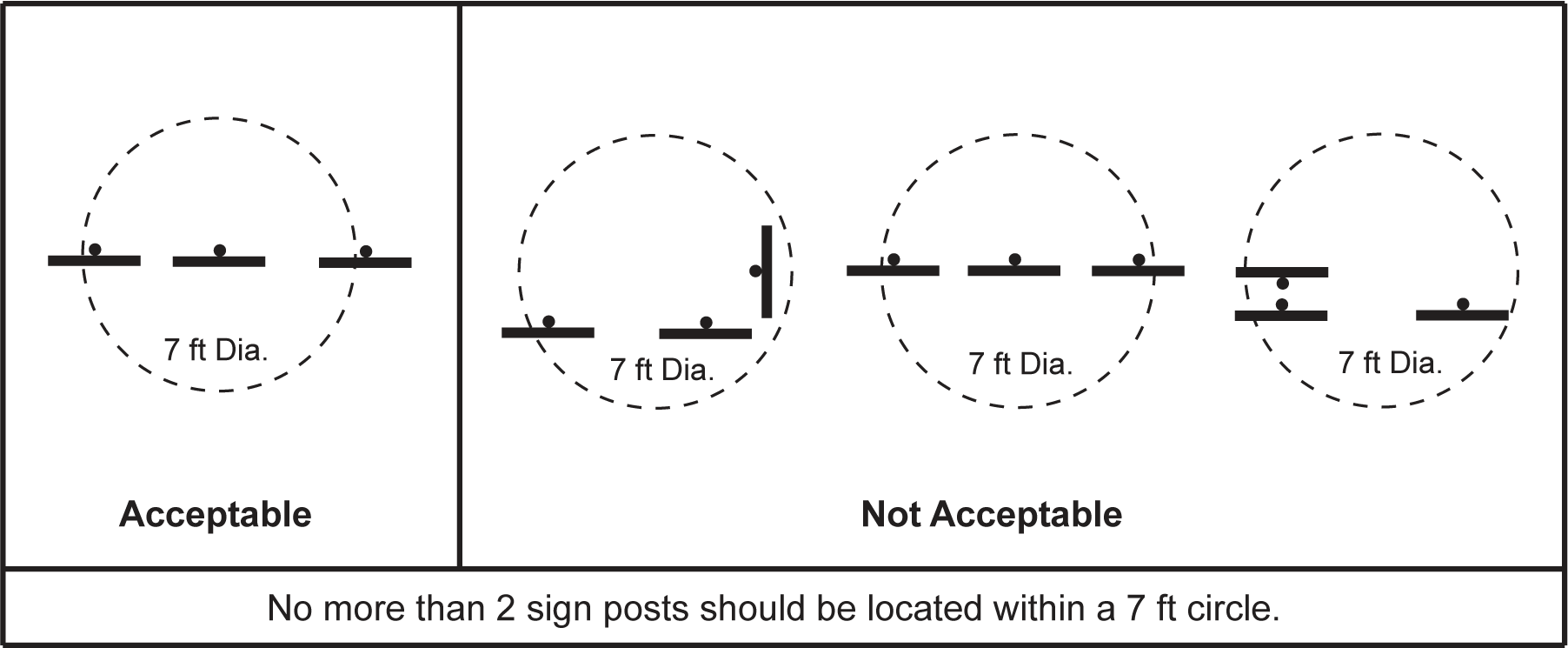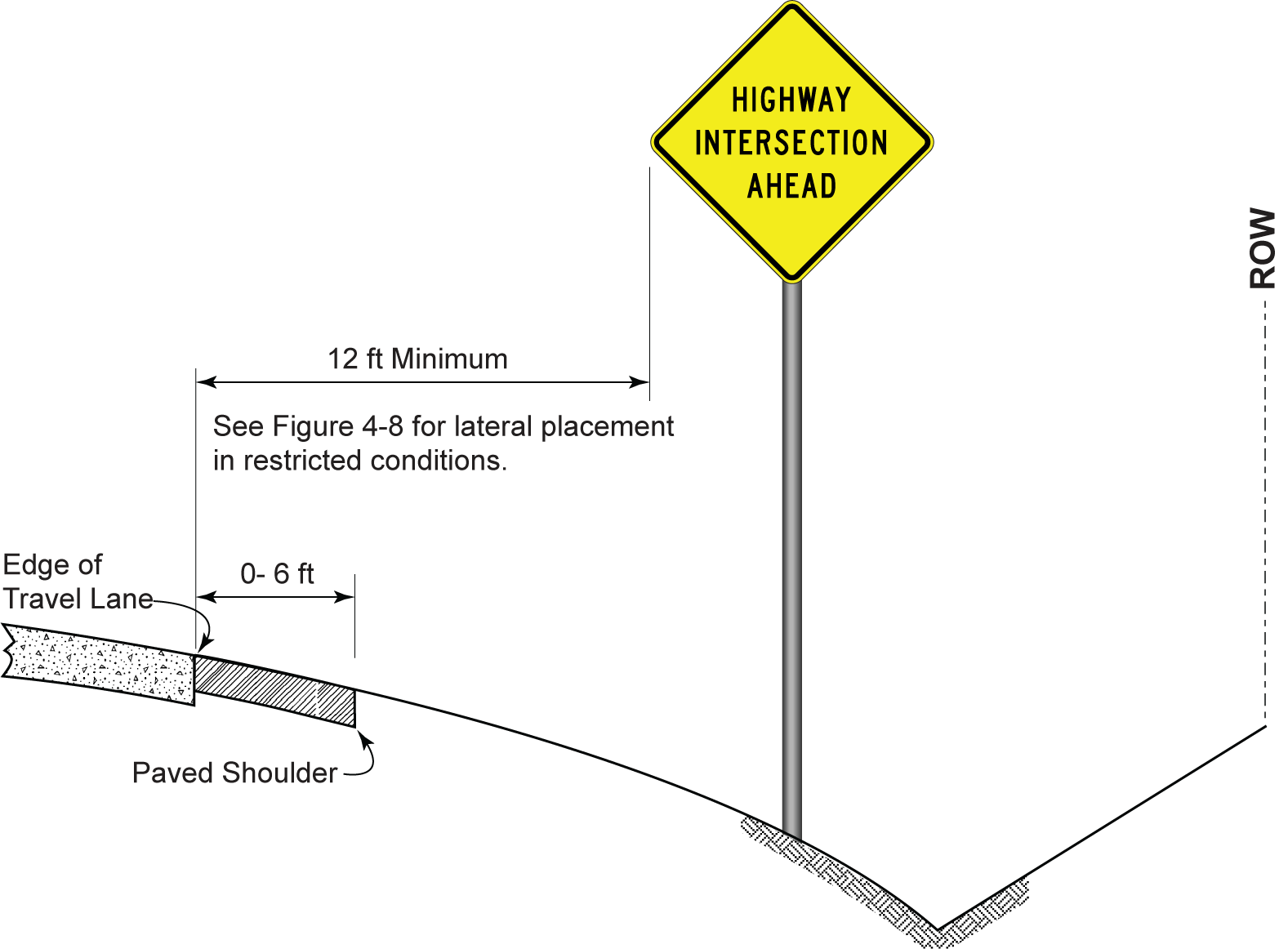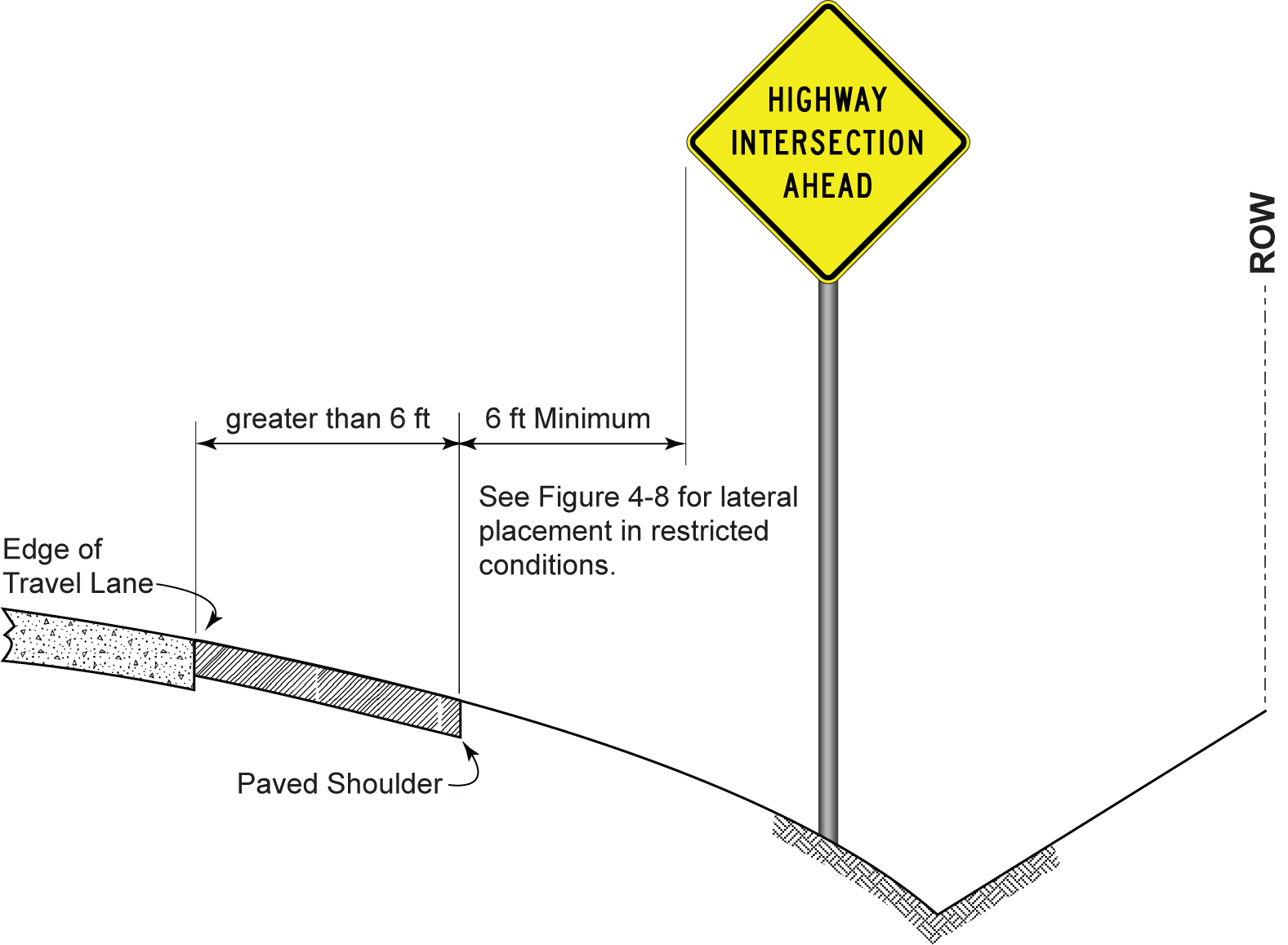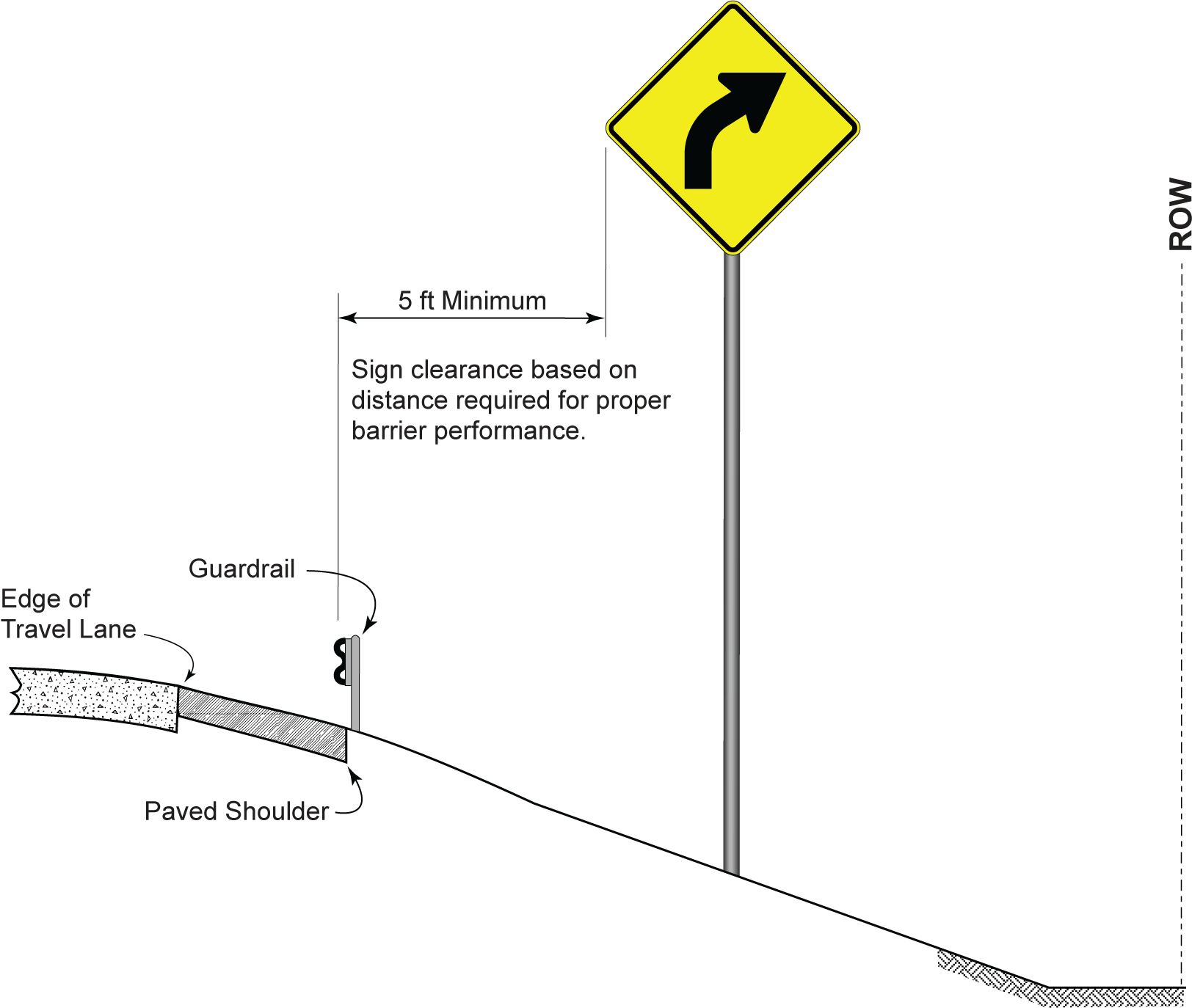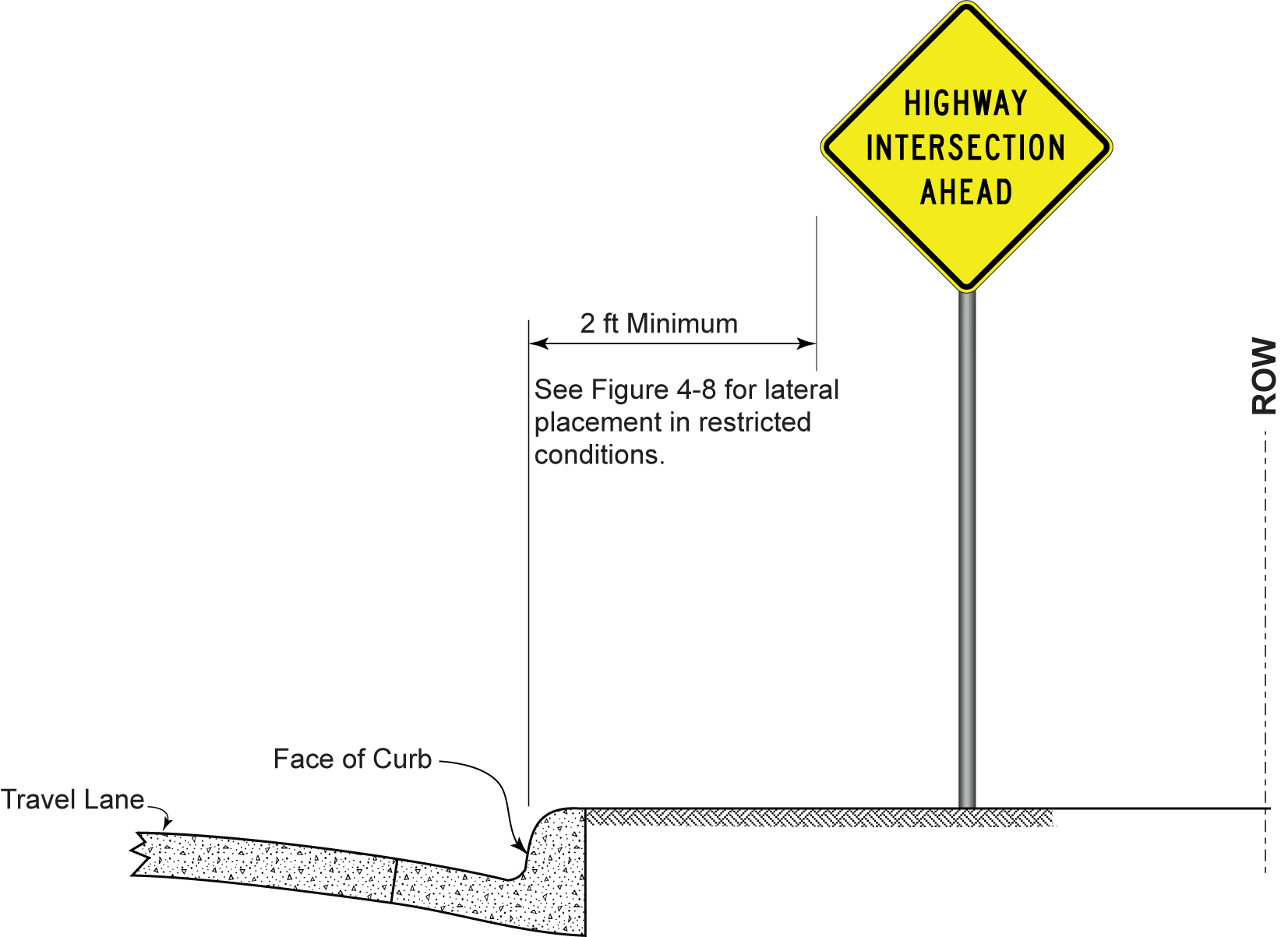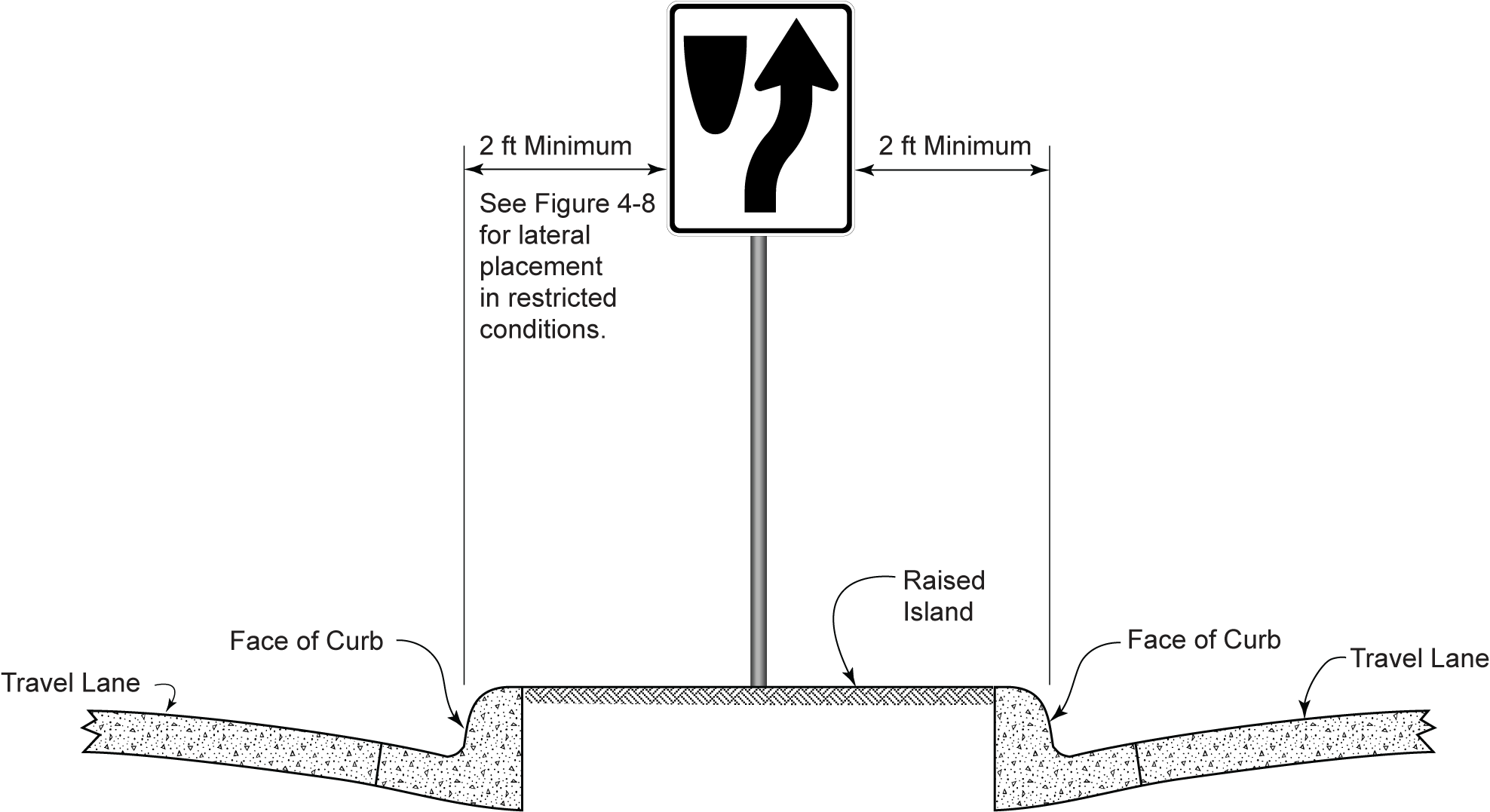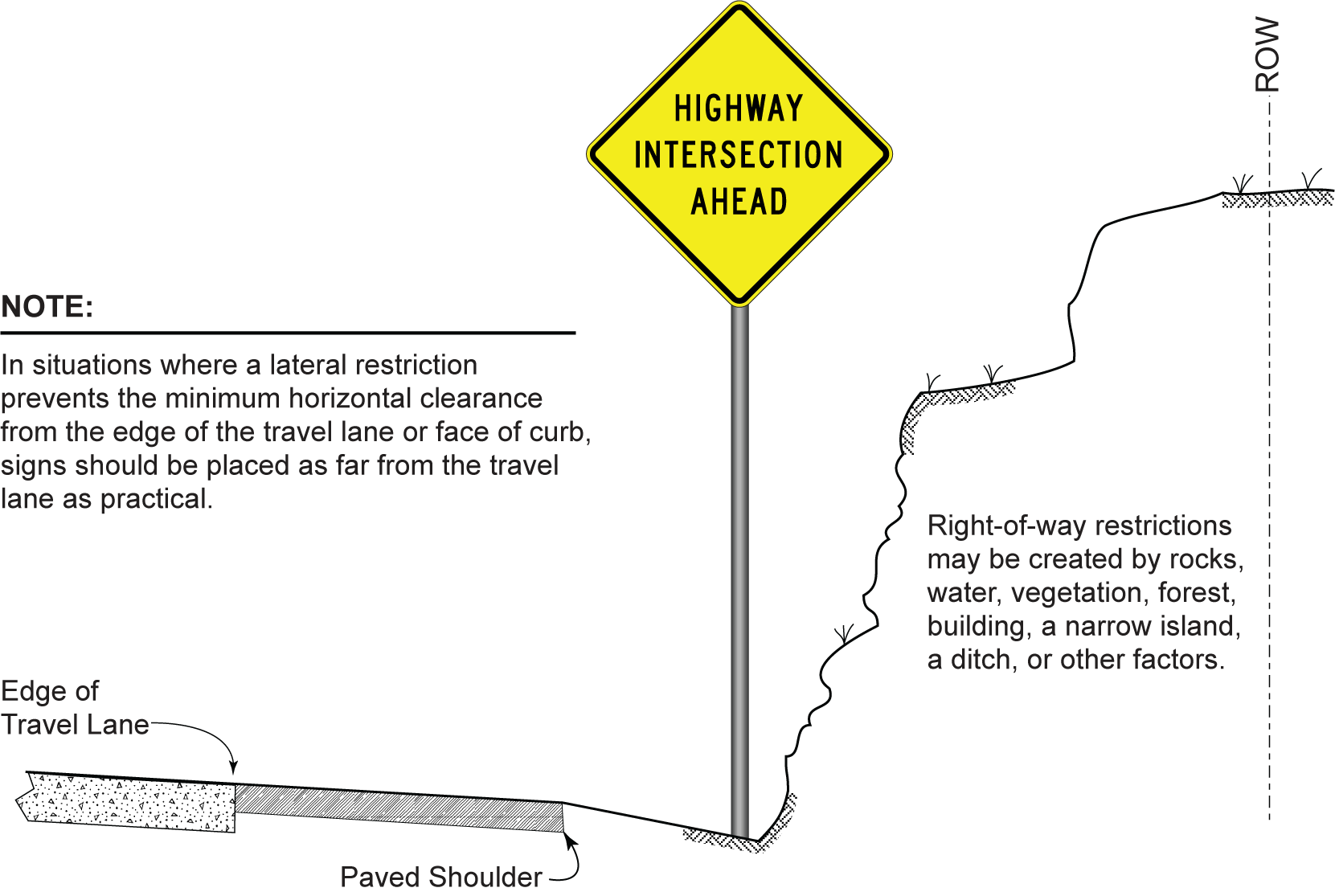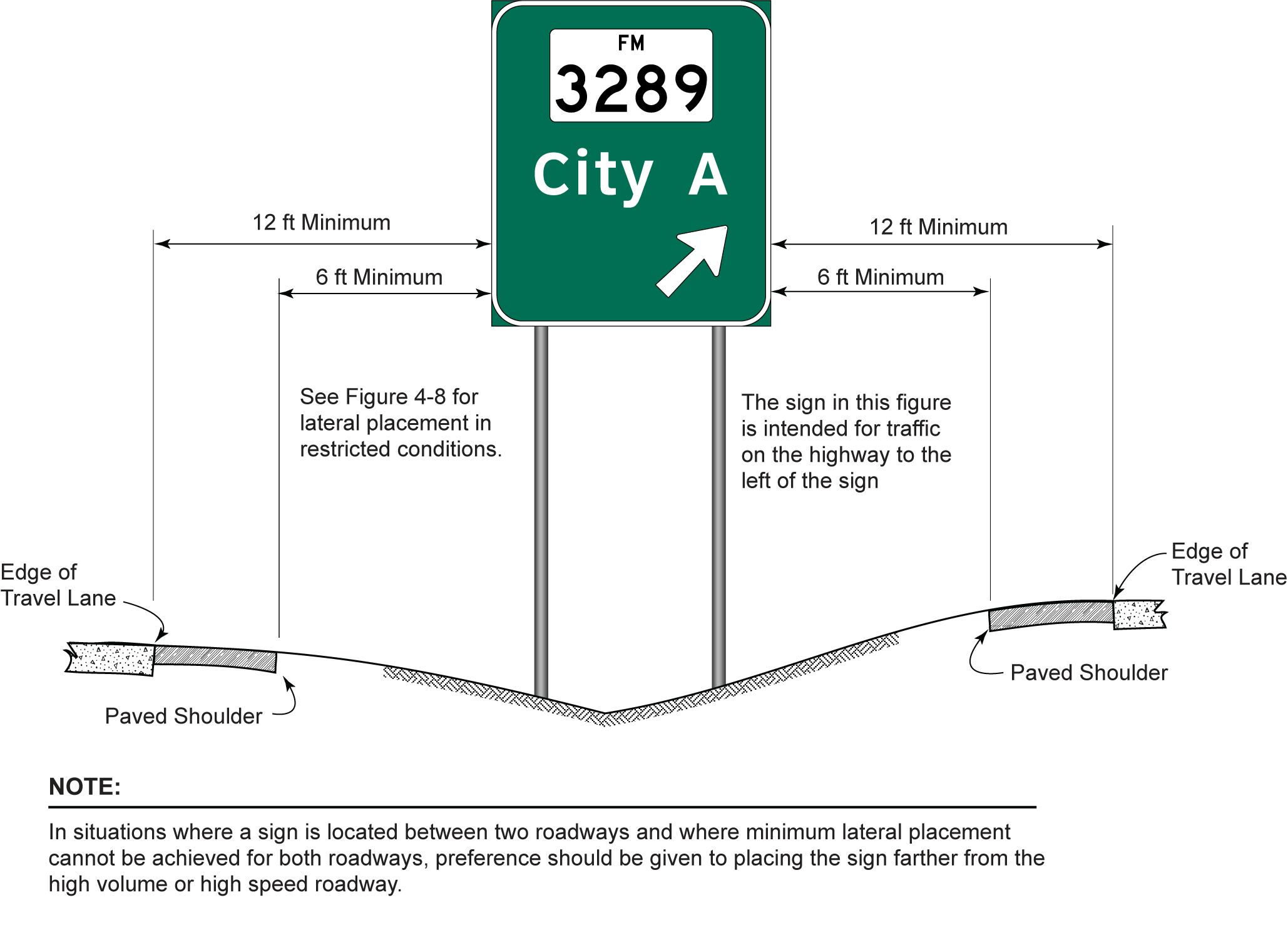Section 2: Lateral Placement
Anchor: #i999807Introduction
Proper lateral placement of a sign:
- Anchor: #SKSNLJQA
- Improves the visibility of the sign, and Anchor: #RKYMOAKW
- Reduces the probability of the sign being hit by vehicles leaving the roadway.
Locating Sign Posts Close to One Another
Figure 4-2 illustrates that no more than two sign supports should be located within a 7 ft circle.
Figure 4-2. Placement of Signs within a 7 ft Circle
Anchor: #i999847Lateral Placement
Highway cross-section is the primary criteria affecting the lateral placement of signs. The key cross-section factors affecting the lateral placement are whether a roadway has no shoulder, a narrow shoulder, a wide shoulder, guardrail, or curb-and-gutter.
The following define narrow and wide shoulders:
- Anchor: #ITPCQYVO
- Narrow Shoulder: A shoulder that is 6 ft or less in width. Anchor: #DNYQKNBV
- Wide Shoulder: A shoulder that is more than 6 ft wide.
Where possible, do not place sign posts in the flow line of a ditch or drainage channel.
Section 2A.19 and Figure 2A-2 and 2A-3 of the Texas MUTCD describe the lateral placement requirements for signs. Figures 4-3 through 4-9 on the following pages illustrate typical situations for the lateral placement of signs. Section 3 contains additional information about lateral placement of signs at intersections.
Figure 4-3. Lateral Sign Placement with No Shoulder or Narrow Shoulder
Figure 4-4. Lateral Sign Placement with Wide Shoulder
Figure 4-5. Lateral Sign Placement with Guardrail
Figure 4-6. Lateral Sign Placement with Curb and Gutter
Figure 4-7. Lateral Sign Placement with Raised Island
Figure 4-8. Lateral Sign Placement in Restricted Right-of-Way
Figure 4-9. Lateral Sign Placement between Two Roadways
